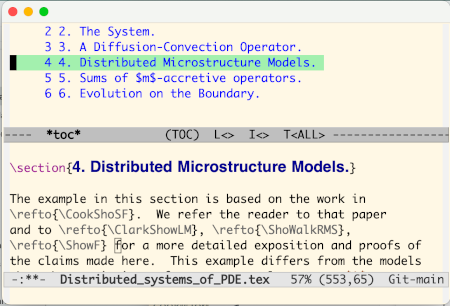The word “normal” in mathematical nomenclature does not always means “usual” or “customary” as it does in colloquial English. Instead, it might that something has a convenient property. That is the case for normal subgroups.
We can do things with normal subgroups that we cannot do with other subgroups, such as take quotients, and so once normal subgroups are introduced in an algebra class, non-normal subgroups disappear from the discussion. A student might be left with the impression that non-normal subgroups don’t exist.
This post will give a very simple example of a group with a non-normal subgroup, and show how we can’t do operations with this group that we can with normal subgroups.
Definition of normal subgroup
A normal subgroup of a group G is a subgroup N such gN = Ng for any element g in G. That is, if I multiply everything in N by g on the left or I multiply everything in N by g on the right, I get the same set of elements.
This does not mean that gn = ng for every n in N. It means that for every n in N, there is some element m in N such that gn = mg. The elements n and m might be the same, but they might not.
In an Abelian (commutative) group, gn always equals ng, and so all subgroups are normal. But most groups are not Abelian.
Structure-preserving functions
Along with every algebraic structure there are functions that preserve aspects of that structure. In the category of groups, these structure-preserving functions are called homomorphisms, coming from the Greek words for “same” and “shape.”
A homomorphism between groups gives you a sort of picture of the first group inside the second group in a way that is consistent with the structure of groups. Specifically, if f is a homomorphism from a groups G to a group H, then
f(xy) = f(x) f(y).
Here we denote the group operation by writing two things next to each other. So “xy” means the group operation in G applied to x and y. This operation may or may not be multiplication. The same is true on the right-hand side: f(x) f(y) means the group operation in H applied to f(x) and f(y).
For example, if we let G be the real numbers with the group operation being addition, and we let H be the positive real numbers with the group operation being multiplication, then the exponential function is a homomorphism between these groups:
exp(x + y) = exp(x) exp(y).
Kernels
The kernel of a homomorphism between G and H is the subset of things in G that get sent to the identity element in H. In the example above, the identity element in H is 1, and the only element in G that gets mapped to 1 is the number 0. It’s not a coincidence that 0 is the identity element in G: homomorphisms always send the identify element of one group to the identity element of the other group. The kernel of a homomorphism always includes the identity, but it may also include more.
Normal subgroups are subgroups that can be kernels. A subgroup of G is normal if and only if there is some homomorphism from G to another group that has that subgroup as its kernel.
A non-normal subgroup
Let G be the group of permutations on three elements. The group operation is composition, i.e. do one permutation then do the other.
The identity element is the permutation that leaves everything alone. Denote this by 1. Another element of G is the permutation that swaps the first two elements. We’ll denote this by (12).
So if our three elements are a, b, and c, then the permutation 1 takes (a, b, c) to (a, b, c). And the permutation (12) takes (a, b, c) to (b, a, c).
The two elements 1 and (12) form a subgroup of G. But we will show that a homomorphism from G to a group H cannot take these two elements, and only these two elements, to the identity on H. It won’t matter what group H is, but we’ll need a name for the identity element in H. Let’s call it e.
Let f be a homomorphism from G to H. () By definition
f(xy) = f(x) f(y)
and by applying this to (xy)z we have
f(xyz) = f(x) f(y) f(z)
If we let z be the inverse of x and y is in the kernel of f, we have
f(xyx−1) = f(x) f(y) f(x−1) = f(x) e f(x)−1 = e.
This says that if y is in the kernel of f, xyx−1 must also be in the kernel of f for every x.
The permutation that swaps the second and third elements, (23), is its own inverse: swap the second and third elements twice and you’re back where you started. So if (12) is in the kernel of f then so is (23)(12)(23). You can work out that (23)(12)(23) reverses three elements. This shows that if the subgroup consisting of 1 and (12) is in the kernel of f, so is the reverse permutation, which is not part of our subgroup. So our subgroup alone cannot be a kernel of a homomorphism.
Related posts





